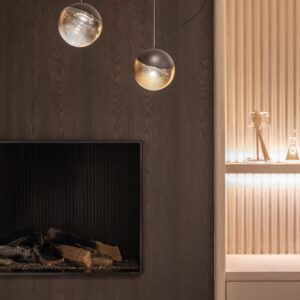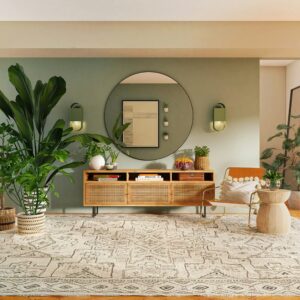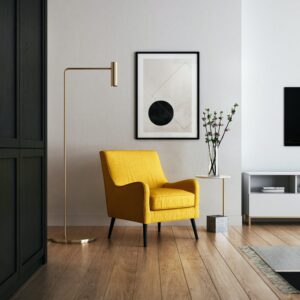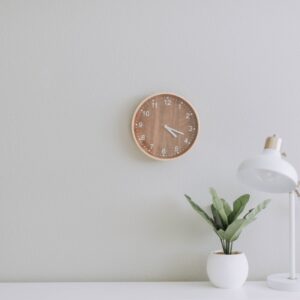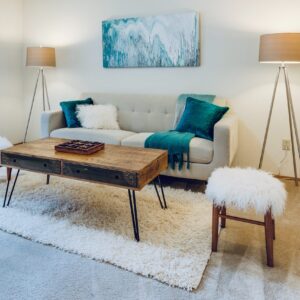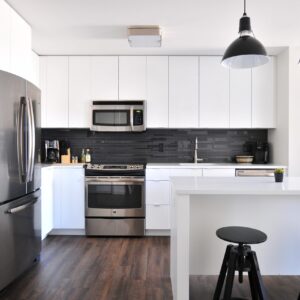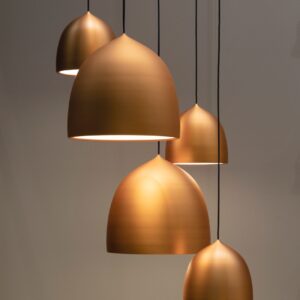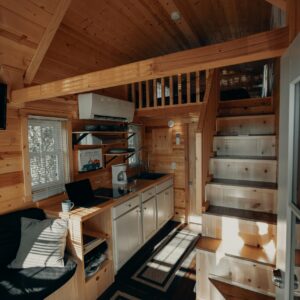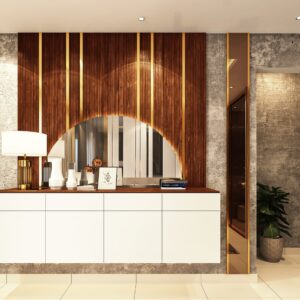Navigating the Price of Opulence: Decoding the Costs of Luxury Interior Design
Introduction: Luxury interior design is an art form that goes beyond mere decoration, transcending spaces into realms of opulence and sophistication. As clients embark on the journey of transforming their living spaces into statements of refinement, understanding the intricate nuances of cost becomes paramount.
The Foundation of Costs: The genesis of luxury interior design costs lies in the comprehensive process of understanding the client’s vision. Professional designers delve deep into consultations, deciphering preferences, lifestyle, and aspirations. This meticulous groundwork establishes the foundation for a bespoke design that reflects the unique essence of the individual or family.
The Craftsmanship of Designers: At the forefront of luxury interior design are seasoned professionals with a discerning eye for detail. Beyond selecting furniture and color schemes, these experts engage in spatial planning, lighting design, and the seamless integration of high-end materials. Their expertise is a cornerstone, shaping the very fabric of luxury within a space.
Materials: The Essence of Opulence: Luxury design is synonymous with exclusive materials. Rare marbles, exotic woods, and custom fabrics become the palette with which designers create masterpieces. The choice of such premium materials not only elevates aesthetics but also underlines the exclusivity of the space, becoming a pivotal factor in cost considerations.
Spatial Transformation: The transformation of a space often involves architectural modifications, necessitating collaboration with architects. Whether expanding rooms or creating custom features, these structural changes contribute significantly to the overall cost, reflecting the scale and complexity of the design.
Technological Integration: Luxury extends to the integration of cutting-edge technology seamlessly into design. State-of-the-art audiovisual systems, smart home automation, and bespoke tech solutions enhance not only comfort but also the overall sophistication of the space, adding a layer of cost to the project.
Bespoke Creations: Commissioning bespoke furniture and decor is a hallmark of luxury interior design. These one-of-a-kind pieces, often crafted by skilled artisans, contribute not only to the exclusivity of the space but also to the overall budget, reflecting the investment in personalized, tailor-made items.
Scale Matters: The scale of a project is a pivotal factor in determining costs. Designing a sprawling penthouse or an expansive estate demands a different level of attention and resources compared to a more modest residential space. The sheer size and complexity of the project influence both time and budget considerations.
Time as a Luxury: Time is a luxury in the world of high-end design. The intricate planning, meticulous sourcing of rare materials, and collaboration with skilled artisans contribute to a lengthier design process. This time investment ensures that every detail is honed to perfection, adding to the overall cost.
Project Management Expertise: Effective project management is integral to luxury interior design. Coordinating various professionals, overseeing construction, and managing timelines demand seasoned project managers. Their expertise ensures the flawless execution of the design vision, influencing costs.
Site-Specific Challenges: Geographical location and site-specific challenges can sway costs. Working on a project in a metropolitan area with high living costs may necessitate a larger budget compared to a project in a more cost-friendly locale. Adapting to the unique characteristics of each site is an investment in the project’s success.
Environmental Considerations: Environmental consciousness introduces another layer to luxury design costs. Sustainable practices and eco-friendly materials may incur additional expenses, but they align with the ethos of responsible luxury, reflecting a commitment to ethical and environmentally friendly design.
Collaboration with Renowned Brands: The collaboration with renowned brands and designers is a characteristic element of luxury interiors. Partnering with iconic names in the industry ensures access to exclusive collections, adding both prestige and cost to the project.
Customization: The level of customization desired by the client significantly impacts costs. Those seeking a truly unique and personalized space may opt for extensive customization, influencing both material and labor expenses. The degree of exclusivity desired becomes a key cost determinant.
Procuring Art and Accessories: Acquiring art and accessories is a nuanced aspect of luxury interior design. Investing in one-of-a-kind pieces or collaborating with artists adds a substantial financial dimension to the project, enhancing the exclusivity and cultural richness of the space.
Exquisite Lighting Design: Luxury interiors are distinguished by their exquisite lighting design. Custom fixtures, strategic placement, and quality lighting design involve specialized consultants, contributing to the overall cost while elevating the aesthetic and ambiance of the space.
International Projects: Embarking on international projects presents unique challenges and expenses. Navigating cultural nuances, sourcing materials globally, and adhering to international regulations contribute to the overall cost of bringing luxury design to a global stage.
Transparency in Communication: Effective communication and transparency in presenting costs are crucial. Establishing a clear and detailed budget breakdown helps clients understand the value proposition and justifies the investment in luxury design. Open dialogue ensures alignment between expectations and outcomes.
Risk Mitigation: Risk mitigation is a key consideration in luxury interior design. Unforeseen challenges, such as delays or unexpected expenses, can arise during a project. A contingency budget is often set aside to address such contingencies, ensuring that the project stays on track without compromising quality.
Quality Control: Quality control is non-negotiable in luxury design. Rigorous quality checks and inspections throughout the project ensure that every detail meets the highest standards, preventing costly rework or revisions. The pursuit of excellence is reflected in the commitment to uncompromising quality.
Textiles and Soft Furnishings: The allure of luxury extends to the realm of textiles and soft furnishings. From custom drapery to high-thread-count linens, investing in premium textiles adds a layer of comfort and refinement to the space, contributing to the overall ambiance and cost.
The Role of Interior Design Firms: Engaging renowned interior design firms is a common path in luxury design. These firms provide access to a network of skilled professionals and industry connections, adding a layer of expertise and prestige that influences the overall cost.
Brand Association: The significance of brand association cannot be overlooked. Opting for well-known luxury brands in furniture, fixtures, and finishes establishes a sense of prestige but also comes with a price tag reflective of the brand’s cachet.
Lifecycle Costs: Understanding the lifecycle costs of materials and finishes is crucial. While certain materials may have a higher upfront cost, their durability and longevity may result in cost savings in the long run, making them a prudent investment in the context of luxury design.
Attention to Detail: Elegance lies in the details, and this is especially true in luxury interior design. From custom moldings to intricate carvings, the minutiae of the design contribute to the overall aesthetic and may require specialized craftsmanship, impacting costs.
Sensory Experience: The role of aesthetics extends beyond visual appeal; it encompasses the sensory experience. Incorporating scents, such as custom fragrances or natural aromas, contributes to the immersive luxury experience but involves additional costs.
Art Curation: Art curation is a delicate balance between personal taste and investment. Acquiring museum-quality pieces may elevate the artistic merit of the space, adding a substantial financial dimension to the project and enhancing its cultural richness.
Cultural and Historical References: The influence of cultural and historical references in luxury design is undeniable. Incorporating elements that resonate with the client’s heritage or a specific design era may require specialized research and sourcing, impacting costs.
Form and Function: Furniture and decor that seamlessly blend form and function define luxury interiors. Investing in pieces that are not only aesthetically pleasing but also comfortable and functional adds depth to the design but may involve higher costs.
Access to Exclusive Showrooms: Access to exclusive showrooms and design centers is a privilege in luxury interior design. Professionals in this field often have relationships with such establishments, providing clients with access to a curated selection of premium products.
Art and Technology Integration: The integration of art and technology extends to the realm of custom installations. From interactive displays to integrated sound systems, these cutting-edge features contribute to the overall luxurious experience but may require specialized expertise and add to the project’s cost.
Natural Elements: The allure of natural elements, such as rare stones and exotic woods, is a defining characteristic of luxury interiors. Sourcing and incorporating these materials into the design not only enhance visual appeal but also add an air of exclusivity, impacting costs.
Investment in Well-Being: Luxury interior design is an investment in well-being. Spaces are crafted not just for visual pleasure but to enhance the quality of life. Every aspect, from aesthetics to functionality, contributes to an environment that exudes opulence and comfort.
Conclusion: In unraveling the costs of luxury interior design, it becomes apparent that the investment is not just monetary; it is a commitment to creating spaces that embody the epitome of refinement. From the choice of materials to the expertise of professionals, every element contributes to the symphony of opulence that defines luxury interior design. As clients embark on this journey, understanding the intricate layers of cost empowers them to make informed decisions, ensuring that their investment results in spaces that are not only visually stunning but also imbued with a timeless sense of luxury.




